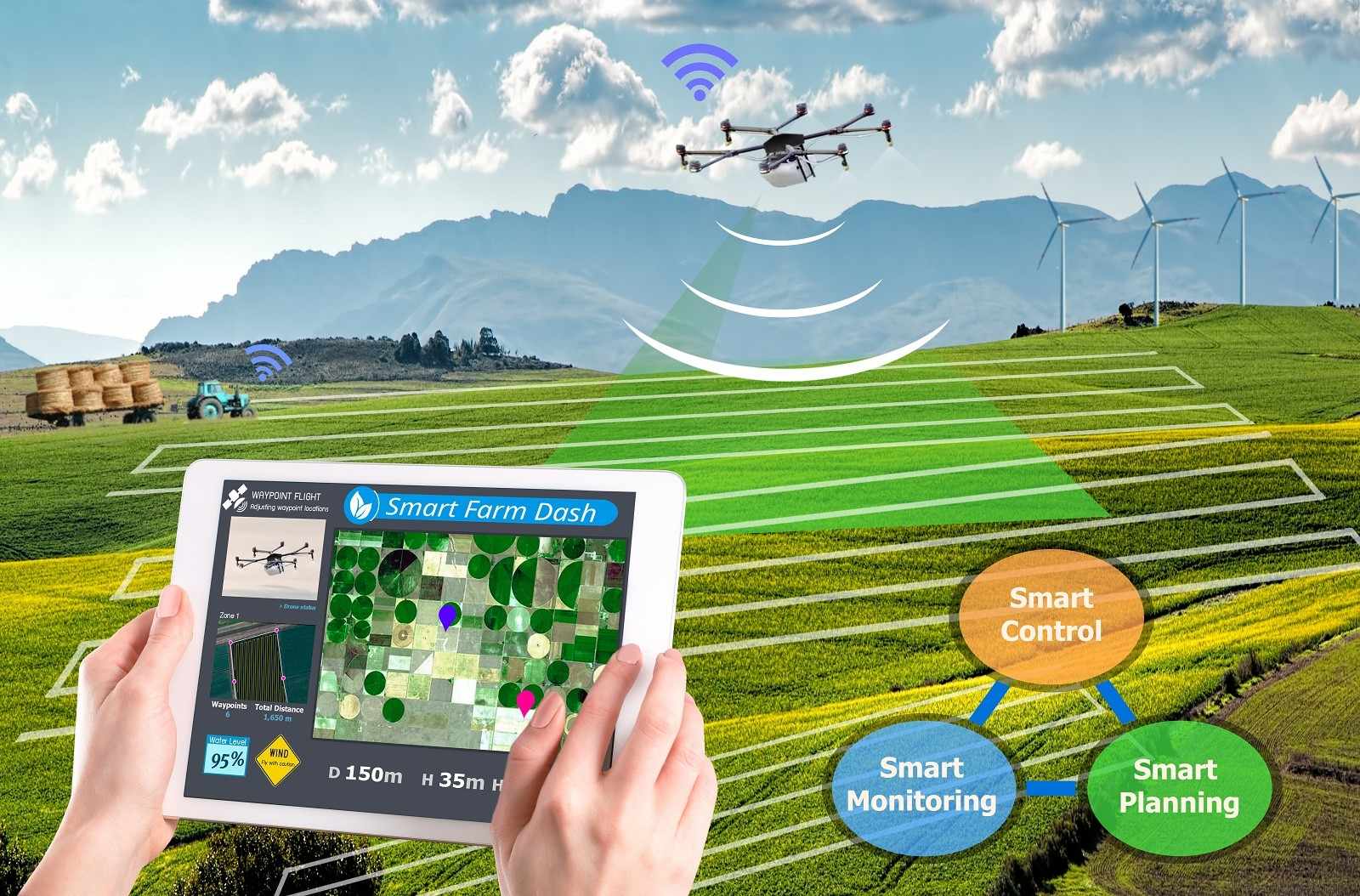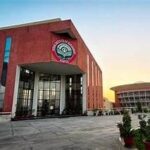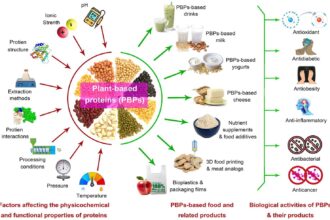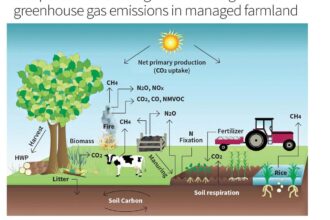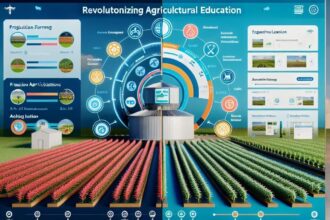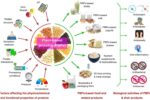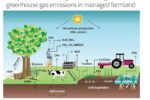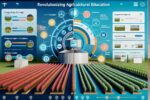🌱 Introduction
Agriculture, the backbone of many economies, is undergoing a significant transformation. With the global population on the rise and climate change posing new challenges, traditional farming methods are being supplemented—and in some cases replaced—by modern techniques. These innovations aim to increase productivity, ensure sustainability, and meet the growing food demands of the 21st century.
🌾 1. Precision Agriculture
Definition:
Precision agriculture involves using technology to monitor and manage field variability in crops to optimize yield and resource use.
Key Components:
- GPS and GIS Technology: Allows farmers to map fields and apply inputs precisely where needed.
- Drones and Satellites: Provide real-time data on crop health, soil conditions, and weather patterns.
- IoT Sensors: Monitor soil moisture, temperature, and nutrient levels.
Benefits:
- Reduced input costs (water, fertilizers, pesticides).
- Increased crop yields and quality.
- Enhanced decision-making through data analytics.
Global Example:
In the U.S., farmers using precision agriculture have reported a 15-20% increase in yields and a 10-15% reduction in input costs.
🌿 2. Organic Farming
Definition:
Organic farming relies on natural processes and materials, avoiding synthetic chemicals, to cultivate crops.
Principles:
- Crop rotation and polyculture.
- Use of organic fertilizers like compost and manure.
- Biological pest control methods.
Benefits:
- Improved soil health and biodiversity.
- Reduced chemical runoff and pollution.
- Access to premium markets and higher prices.
Indian Scenario:
The Indian government has been promoting organic farming through schemes like the Paramparagat Krishi Vikas Yojana (PKVY), encouraging farmers to adopt organic practices.
💧 3. Smart Irrigation Systems
Definition:
Smart irrigation uses technology to optimize water usage in agriculture, ensuring crops receive adequate water without wastage.
Technologies:
- Drip Irrigation: Delivers water directly to the plant roots, minimizing evaporation and runoff.
- Sprinkler Systems: Distribute water evenly over large areas.
- Soil Moisture Sensors: Monitor soil moisture levels to automate irrigation schedules.
Benefits:
- Significant water conservation.
- Improved crop yields.
- Reduced labor costs.
Example:
In Israel, advanced irrigation techniques have transformed arid lands into productive agricultural zones.
🏙️ 4. Vertical Farming
Definition:
Vertical farming involves growing crops in stacked layers, often in controlled indoor environments.
Key Features:
- Use of hydroponics or aeroponics.
- LED lighting to simulate sunlight.
- Climate-controlled environments.
Benefits:
- Space-efficient, suitable for urban areas.
- Reduced transportation costs and carbon footprint.
- Year-round crop production.
Global Example:
Singapore has invested heavily in vertical farming, with facilities producing leafy greens and herbs in urban settings.
🌾 5. Conservation Agriculture
Definition:
Conservation agriculture focuses on sustainable farming practices that protect and enhance the environment.
Principles:
- Minimal soil disturbance (no-till farming).
- Permanent soil cover (cover crops or mulching).
- Crop rotation and diversification.
Benefits:
- Improved soil structure and fertility.
- Enhanced water retention.
- Reduced erosion and runoff.
Indian Example:
The adoption of zero-tillage farming in Punjab has led to increased wheat yields and reduced water usage.
🌳 6. Agroforestry
Definition:
Agroforestry integrates trees and shrubs into agricultural landscapes to diversify production and enhance sustainability.
Benefits:
- Increased biodiversity.
- Improved soil fertility through nitrogen fixation.
- Additional income from timber, fruits, and nuts.
Indian Scenario:
The National Agroforestry Policy encourages farmers to plant trees alongside crops, promoting environmental and economic benefits.
🧪 7. Biotechnology and Genetically Modified Crops
Definition:
Biotechnology involves using scientific techniques to modify organisms, including crops, for desired traits.
Applications:
- Development of pest-resistant and drought-tolerant crops.
- Enhanced nutritional content in food crops.
- Reduced dependency on chemical inputs.
Global Example:
Bt cotton, genetically modified to resist pests, has been widely adopted in countries like the U.S. and India.
🧠 8. Artificial Intelligence and Machine Learning in Agriculture
Definition:
AI and ML are used to analyze data and make predictions to improve farming practices.
Applications:
- Predictive analytics for crop yields and disease outbreaks.
- Automation of tasks like harvesting and weeding.
- Precision application of inputs.
Benefits:
- Increased efficiency and reduced labor costs.
- Data-driven decision-making.
- Early detection of issues, leading to timely interventions.
Example:
AI-powered drones are being used to monitor crop health and apply pesticides precisely where needed.
🚜 9. Mechanization and Automation
Definition:
Mechanization involves using machinery to perform agricultural tasks, while automation refers to machines performing tasks with minimal human intervention.
Technologies:
- Tractors and Combine Harvesters: For plowing, sowing, and harvesting.
- Robotic Harvesters: For picking fruits and vegetables.
- Automated Irrigation Systems: For efficient water management.
Benefits:
- Increased productivity and reduced labor costs.
- Consistent quality and reduced human error.
- Ability to manage larger areas efficiently.
Indian Example:
The introduction of the Super Seeder in Punjab has helped manage paddy stubble and prepare fields for wheat sowing without burning.
🌍 10. Climate-Smart Agriculture
Definition:
Climate-smart agriculture aims to increase productivity in a sustainable way, adapt to climate change, and reduce greenhouse gas emissions.
Strategies:
- Adoption of drought-resistant crop varieties.
- Improved water management practices.
- Diversification of crops and livestock.
Benefits:
- Enhanced resilience to climate variability.
- Reduced environmental impact.
- Improved food security.
Global Efforts:
Organizations like the Food and Agriculture Organization (FAO) are promoting climate-smart practices worldwide.
🔍 Comparison Table
| Technique | Key Benefit | Ideal For | Global Adoption |
|---|---|---|---|
| Precision Agriculture | Resource optimization | Large-scale farms | High |
| Organic Farming | Soil health and premium markets | Small to medium farms | Moderate |
| Smart Irrigation | Water conservation | Water-scarce regions | High |
| Vertical Farming | Urban food production | Urban areas | Growing |
| Conservation Agriculture | Environmental sustainability | All farm sizes | Increasing |
| Agroforestry | Biodiversity and income | Mixed farming systems | Moderate |
| Biotechnology | Pest and drought resistance | Large-scale farms | High |
| AI and ML | Data-driven decisions | Tech-savvy farmers | Emerging |
| Mechanization | Labor efficiency | Large-scale farms | High |
| Climate-Smart Agriculture | Climate resilience | Climate-vulnerable areas | Growing |
🧭 Choosing the Right Technique
Selecting the appropriate farming technique depends on various factors:
- Farm Size: Larger farms may benefit from precision agriculture and mechanization, while smaller farms might opt for organic methods.
- Climate: Regions prone to drought may prioritize smart irrigation and climate-smart agriculture.
- Market Access: Farmers aiming for premium markets might consider organic farming or vertical farming.
- Resources: Availability of capital and technology can influence the adoption of advanced techniques like AI and biotechnology.
🌐 Future Outlook
The future of farming lies in the integration of technology with traditional practices. Innovations like AI, IoT, and biotechnology are set to revolutionize agriculture, making it more efficient, sustainable, and resilient. However, the success of these techniques depends on factors like infrastructure, education, and policy support.
📚 Conclusion
Modern farming techniques are reshaping agriculture, offering solutions to challenges like climate change, resource scarcity, and food security. By adopting these methods, farmers can enhance productivity, ensure sustainability, and meet the growing global food demands. As we move forward, continuous innovation and adaptation will be key to the future of farming.
🖼️ Image Prompts for AI Generation
- Precision Agriculture: “Aerial view of a vast farm with GPS-guided tractors and drones monitoring crops.”
- Organic Farming: “A lush green field with diverse crops, compost piles, and natural pest control methods.”
- Smart Irrigation: “A field equipped with drip irrigation systems and soil moisture sensors.”
- Vertical Farming: “Indoor multi-layered farm with LED lights and hydroponic systems.”
- Conservation Agriculture: “A field with minimal tillage, cover crops, and crop rotation practices.”
- Agroforestry: “A farm with rows of trees interspersed with crops and livestock.”
- Biotechnology: “A laboratory setting with scientists developing genetically modified crops.”
- AI and Machine Learning: “A farm with autonomous tractors and AI-powered monitoring systems.”
- Mechanization: “A large farm with combine harvesters and robotic planters in action.”
- Climate-Smart Agriculture: “A diverse farm implementing drought-resistant crops and water-saving techniques.”
🔗 External Links
- Precision Agriculture Overview
- Organic Farming Benefits
- Smart Irrigation Techniques
- Vertical Farming Insights
- Conservation Agriculture Practices
- Agroforestry Resources
- Biotechnology in Agriculture
- AI in Agriculture
- Mechanization in Farming
- Climate-Smart Agriculture
📝 SEO Metadata
- SEO Title: Best Modern Farming Techniques in India & Worldwide [2025 Guide]
- Meta Description: Explore the top 10 modern farming techniques transforming agriculture in 2025, from precision farming to climate-smart practices.
- URL Slug: modern-farming-techniques-2025
- Meta Tags: Modern Farming, Precision Agriculture, Organic Farming, Smart Irrigation, Vertical Farming

